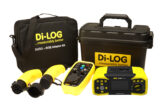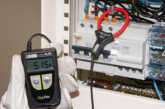
Paul Broad, MD of Re-CAL Calibration Services, looks at why a pro-active test equipment calibration policy is essential nowadays.
Why is calibration of test equipment important?
We regularly hear horror stories of accidents and injuries sustained as a result of faulty wiring or equipment and, with the ‘blame’ culture that exists in our society today, the need for documentation to prove your competence and your equipment’s performance is increasingly important.
Even though electronic equipment has become more reliable, component characteristics can change over time through age and use. These changes will quite often have an effect on the operational performance of the measuring circuits; after all, the majority of instruments are used in arduous environments on a daily basis and can be subjected to rough handling and accidental drops.
On-going calibration on an annual basis ensures that the instrument maintains its accuracy, and provides confidence in the performance necessary for an accurate test. Remember, it’s your signature that goes on the test and inspection sheet!
How often should test equipment be calibrated?
There’s no simple answer to this as it depends entirely on the use and abuse that the instrument is subject to. Most manufacturers recommend a re-calibration period of 12 months to enable the contractor to demonstrate to any inspectorate that they have an effective control system for test equipment.
Are there any regulations governing calibration?
Approved contractors have a duty to ensure that the test equipment that they use to test to BS EN 61557 (17th Edition) and Part P is both accurate and consistent. This is backed up by whichever CPS scheme the contractor is signed up to.
Isn’t it enough just to use a Check-Box to check my meters?
No! In addition to the formal calibration of the instruments, they should also be checked on a regular basis to ensure that they remain within specification. This can be achieved in a number of ways: by cross-referencing to other instruments that the business may own or testing on a designated circuit in the office or home. There are also a number of test instrument manufacturers that now produce calibration check boxes to enable the contractor to check instrument consistency in the office or in the field.
Which of the different types of meters require calibration?
All measuring instruments should be calibrated to ensure they operate to their optimum performance level. This can vary from 17th Edition testers to PAT testers or multi-meters and also gives traceability where results are taken to certify work carried out. Where can I get my meter calibrated? There are a number of companies across the UK that offer calibration services. Re-CAL Calibration, based in the heart of Manchester, offers free of charge collection and delivery nationwide. Your local electrical wholesaler should be able to arrange this for you.
Re-CAL can calibrate anything from PAT and 17th Edition testers to clamp-meters and multi-meters. Calibrations are generally turned around in 3 – 5 working days, however faster calibration is available on request. All certificates issued by Re-CAL are fully traceable to the NPL (National Physics Laboratory) standards and a statement of standards and calibration details is made on all certificates issued.
To assist electricians further, Re-CAL now offers on-site calibration days, usually in conjunction with a local wholesaler, which can reduce the down-time associated with off-site calibration.
For more information about the range of test equipment calibration services from Re-CAL visit: www.recal.biz










